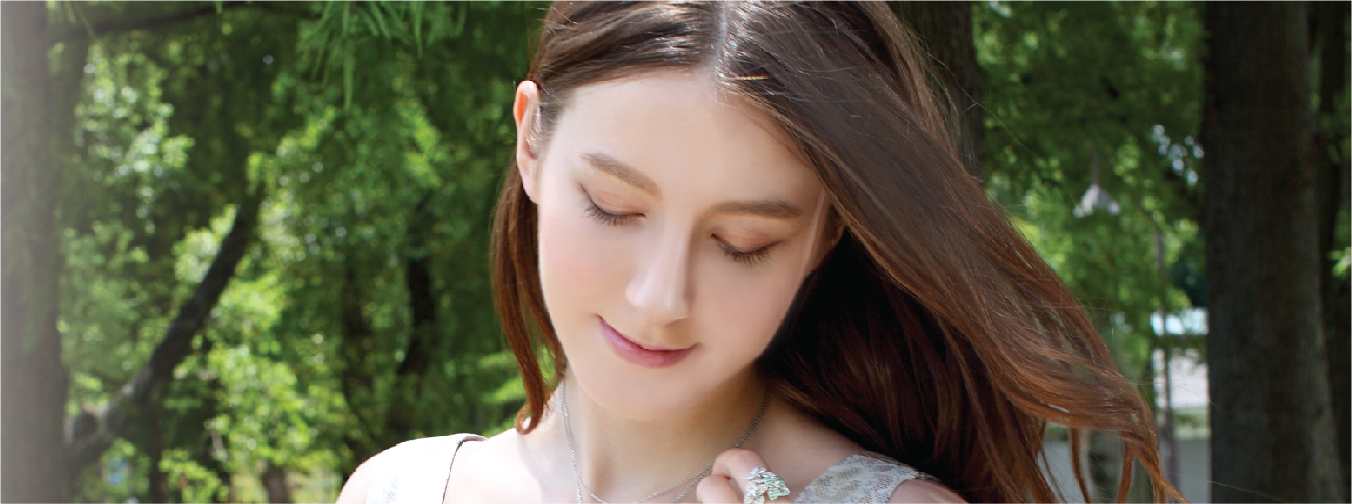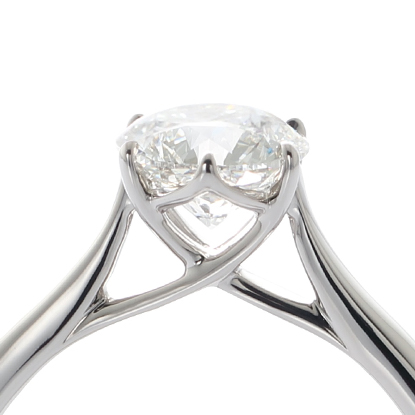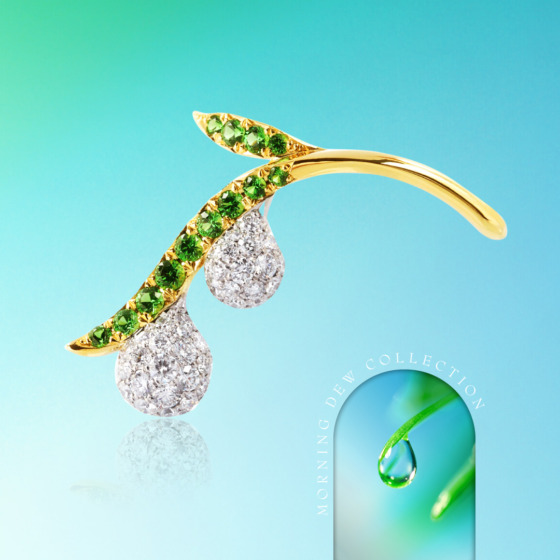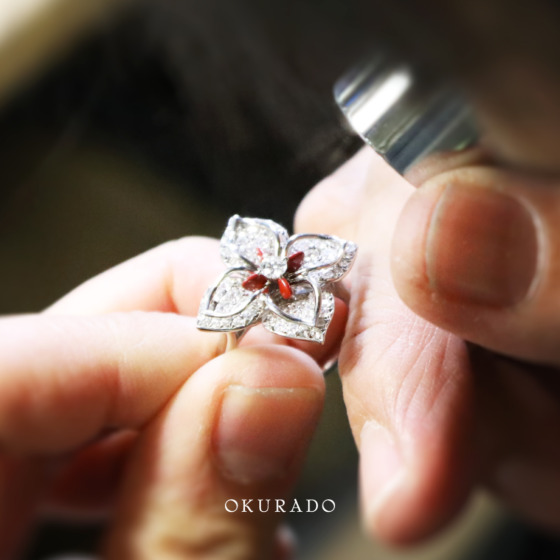大倉堂のジュエリーにはダイヤモンドやルビー、サファイア以外にもいろいろな種類の宝石が使われています。それらの宝石はいろんな場所で買い付けますが、日本のサプライヤーから入手することもあれば、海外のトレードフェアで買い付けることもしばしばです。海外のトレードフェアでは全世界からたくさんのサプライヤーが集まり、膨大な種類の宝石が一同に会します。
そのような場所でどのように石を選ぶのか。私の石選びの基準は ―最終的には私が綺麗と思う石である― ということです。
ひたすら時間をかけてそのような石を探し回ります。最近の流行だとか、見栄えがするだとか、ただ新しいだけの石などは正直なところあまり興味がわきません。綺麗だと思う眼力?識別力?が頼りになるので、日々可能な限りいろんなもの触れながらトレーニングをしています。
むしろ美しい石なのに、あまり知られていない石や色合いのものを見つけ、その良さを十二分に引き出すデザイン、製作によりハイエンドジュエリーとしてお客様に紹介することに喜びを感じています。(たまにマニアックな石すぎて販売するのに苦労することもありますが)
大倉堂の一点物の中でしばしば使う「スピネル」という石があります。屈折率はルビー、サファイア、アレキサンドライトに次ぐ高さです。(基本的には屈折率が高いほど光を多く反射し輝きにつながります。)石の硬さのひとつの指標であるモース硬度もジェムクオリティとしては十分な硬さです。
産地も近いことから長らくルビーと思われていた石だそうです。
10年ほど前ですが海外の展示会で、とても美しい光沢があるパステルカラーに輝く石が目に留まりました。赤、ピンク、バイオレット、オレンジピンクと色は様々で、いずれの色も彩度が高く鮮やか。わくわくしながら、最終的にどのようなデザインにするかを思い描きながら数ピース購入しました。それがスピネルを使い始めたきっかけです。そのときにはもちろん「スピネル」の名前は知っていましたが、実物を見て、他の宝石では見られない輝きの美しさ、色鮮やかさに強く惹かれました。
現在スピネルは世界的に人気が高まり、価格は10年前の8倍~10倍、ものによってはそれ以上になりました。(本当に最初に見たときに自分を信じてもっとたくさん購入していればよかったと後悔しています)昨年「スピネル」が日本で新たに8月誕生石の仲間入りをし、日本での人気も定着しつつあります。
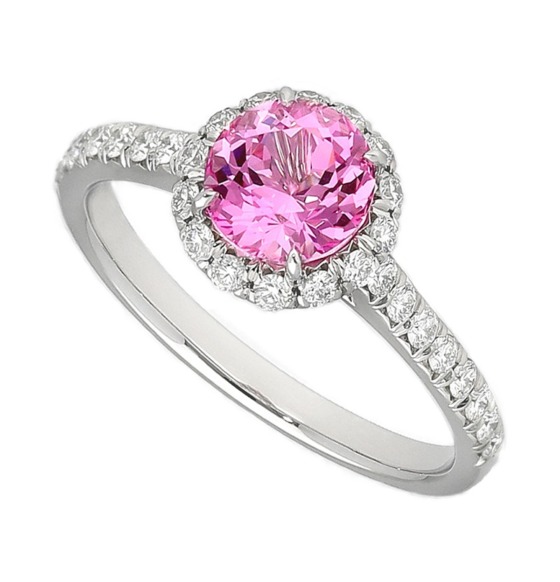
ものすごい輝きを放つラウンドシェイプのピンクスピネル。この色合い、輝きは他の石ではみることができません。
↑クリックしていただくと商品をご覧になれます
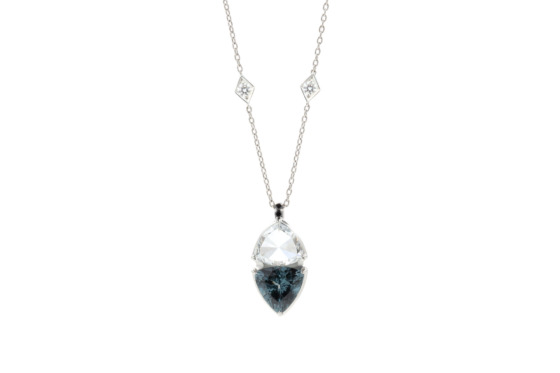
三角のグレースピネル(実物はグレーとバイオレットの間の魅力的な色でした。)その色を引き立たたせるため同サイズのアンティークカットのダイヤモンドを時間をかけてさがし組みあわせました。
↑クリックしていただくと商品をご覧になれます
2,3年くらい前からコバルトを含む「コバルトスピネル」と呼ばれるスピネルも出てきました。 このタイプのごく一部は(全部ではないです)、今まで他の石では見たこともないような鮮やかな蛍光ブルーを発します。
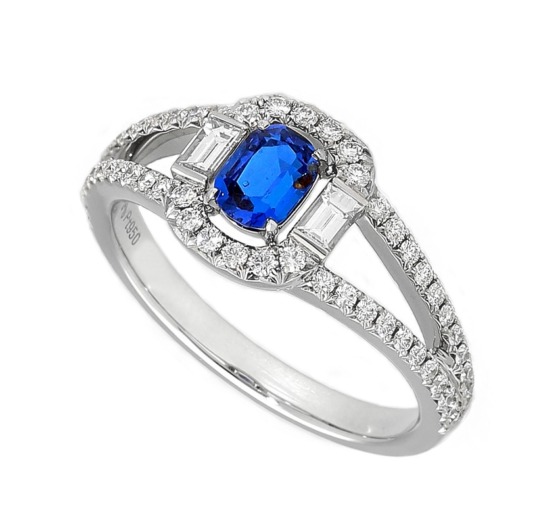
画家イヴクラインのクラインブルーのような鮮やかなコバルトスピネル。この色合いのサファイアを見つけることはできません。
↑クリックしていただくと商品をご覧になれます
その後もこのスピネル以外にもいくつか綺麗な石を見つけ大倉堂のジュエリーに仕立て上げています。
そして現在も年に3回~5回ほど海外のバイヤー向けのフェアに行っています。隅々まで探し回り、まだまだ知られていない美しい石を探し購入し、その宝石の魅力を最大限引き立てて高級感のあるジュエリーに仕立てています。
石によっても仕入れ方、探し方が異なったり、サプライヤーとのやり取り、価格交渉など石の仕入れは奥が深いので、そんな話もまた別の機会でご紹介できればと思います。
大倉堂 OKURADO
大倉仁
My criteria for selecting gemstones
Okurado jewelry uses many different types of gemstones besides diamonds, rubies, and sapphires.
We buy gemstones from many different places. Sometimes we get them from Japanese suppliers, and often we buy them at overseas trade fairs.
At overseas trade fairs, many suppliers gather from all over the world, and a huge variety of gemstones are gathered together.
How do you select stones at such places? My criterion for selecting stones is – in the end, it is the stone that I think is beautiful. I spend a lot of time searching for such stones. I am honestly not interested in the latest fad, or the stone that just looks good, or the stone that is just new. Is it my eye for beauty? I rely on my eyesight or my ability to discern what is beautiful. I train myself by touching as many things as possible every day.
I am rather happy to find stones that are beautiful but are not well known for their color or hue and introduce them to customers as high-end jewelry through design and production that brings out the best of the stone. (Although sometimes I have a hard time selling them because they are too maniacal.)
There is a stone called “spinel” that is often used in Okurado’s one-of-a-kind pieces. Its refractive index is the second highest after ruby, sapphire, and alexandrite. (Basically, the higher the refractive index, the more light is reflected, leading to brilliance.) ) The Mohs hardness, a measure of a stone’s hardness, is also hard enough for gem quality.
The stone was thought to be a ruby for a long time because of the close proximity of its place of origin.
About 10 years ago, at an overseas exhibition, a stone shining in very beautiful lustrous pastel colors caught my eye. The colors varied from red, pink, violet, and orange-pink, all highly saturated and vivid. Excited, I purchased a few pieces, envisioning how I would eventually design them. That was when I started using spinel.
I knew the name “spinel” at the time, of course, but when I saw the actual piece, I was strongly attracted by the beauty of its brilliance and vivid colors that could not be found in any other gemstone.
Today, spinel has become increasingly popular around the world, with prices eight to ten times what they were ten years ago, and in some cases even more. (I really wish I had believed in myself when I first saw it and purchased more.)
Last year “spinel” became the new August birthstone in Japan, and its popularity in Japan is becoming more established.


About two or three years ago, a type of spinel called “cobalt spinel,” which contains cobalt, also began to appear. A small percentage (not all) of this type emits a brilliant fluorescent blue color that has never been seen in any other stone before.

Since then, we have found several other beautiful stones besides this spinel and made them into jewelry for Okurado.
And even now, we go to fairs for overseas buyers three to five times a year. We search everywhere to find and purchase beautiful stones that are still unknown, and we make jewelry with a sense of luxury by enhancing the charm of the gemstone to the maximum.
The purchasing and searching process differs depending on the stone, and the communication with suppliers, price negotiations, and other aspects of stone purchasing are very deep, so I would like to introduce these stories another time.
Hitoshi Okura
OKURADO

